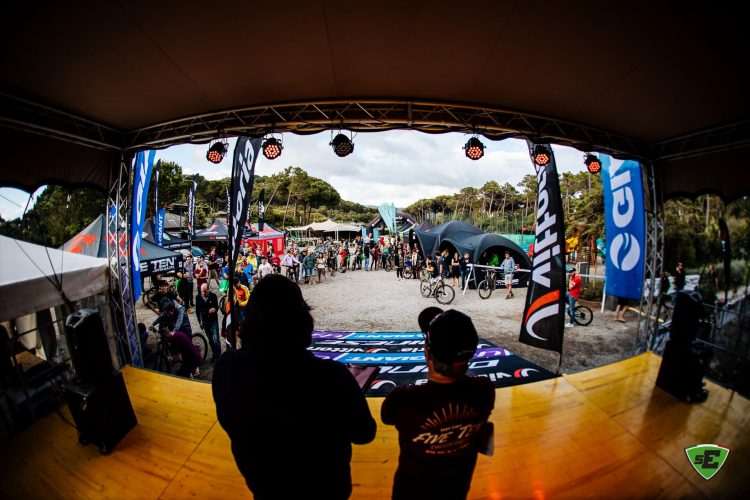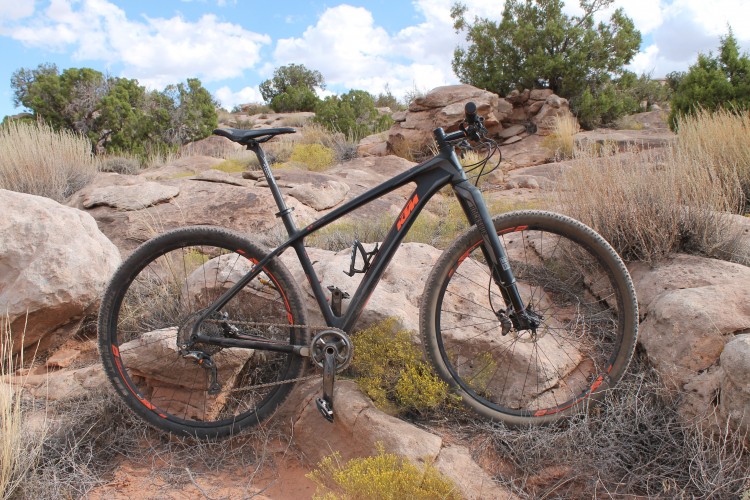
For anyone calendering their first mountain bike race, or checking out a new genre of mountain bike racing, the checklist of important details to consider can be daunting. In addition to preparing your body and bike, you have to know when your race begins and where the beer tent will be. Often there is some key information that organizers expect riders to already know, though not everyone does.
Below are the tips I have learned through many years of racing in the dirt and observing seasoned riders. The race logistics for XC and Enduro races are generally the same, with a few notable exceptions.
XC pre-event prep

Register early: Sign up for the race prior to the event. This will avoid a lot of standing in lines, sorting out exact cash, and the possibility that you turn up to a sold-out race.
GPS: If possible, download the tracks for the race. Even if the course is well-marked your pinned brain can get you lost, and you will need to reorient yourself.
Study the tracks: If you take a look at where the climbs are and what sections are more technical you can sort out where you want to attack, and where you can recover a bit, based on your personal strengths.
Start time: Find out when the gun goes off for your category and the expected duration of the race. Then think about how frequently you will need to eat throughout the race so you can be sure to pack enough calories. Having some sort of sugar every 30 minutes has always been a good metric for me.
First Aid: Find out what to do if you are injured during the race, or come across someone who is.
Extra cash: Bring some paper money to pay for unforeseen expenses, like parking, beers, or lost bets.
Post-race food: Bring some home-cooked grub to quiet the immediate finish line hunger, including your preferred protein.
Enduro logistics
Given its gravity focus and precision timing requirements, enduro racing includes all of the event logistics listed above and a few others specific to the race format.

Protection: Find out what body armor you will need to wear throughout the race, and what you can carry. For example, all races in Italy require kneepads, a full-face helmet, and a back protector. You can swap out the full face for a half shell on the climb if you want to carry it, but most races require riders to keep a helmet on from the time racers leave the start gate.
Timing chips: Timing devices, attached to your bike or body, are used to start and stop the clock on each stage of the race. You will need to rent or buy a timing chip at the race. Some races may use the same chip, and you can save cash by buying your own. If you rent a chip, remember to return it and get your bills back.
Race number and component stickers: The day before the race, or at least an hour before the event begins, pick up your race plate and component stickers. Strap the plate to your bars as you wish, and put one of the stickers on each of your wheels and your fork. These stickers will let officials know that you started and finished the race with the same components. In most races, you are allowed to replace any component that is not stickered, whenever you like. For example, you can swap your front tire if you tear the sidewall, but you cannot swap your front wheel.
Start time: Shortly before the race start (or the night before if you’re lucky), the officials will post start times associated with your race plate number. Go find your start time and remember it well. You will receive a penalty if you are not at the start line when your digits are called. It’s worth wearing a watch during the race so you can keep track of time throughout the day.
Stickers for stage starts: Just before your scheduled start you will receive a sticker with all of your personal stage start times and time control requirements. Stick it to your top tube, right behind your stem, and take a photo of it with your phone in case the sticker comes off or is smeared with mud and sweat.

Transfer times: You will be given an allotted amount of time to get from the end of a given stage to the start of the next. Knowing how much transition time you have allows you to meter your pace so that you don’t have to wait a long time at the top of the next stage or unnecessarily burn out your legs. Alternatively, some transitions are tight and you will want to watch the clock to make sure you climb fast enough to make it to your start. If you miss your start, there will generally be a predetermined time penalty.
Time Control: Enduro racing is all about being in a certain place at a specific time. Most races will have a break, called a time control, after one of the stages. This pause gives the race officials time to check everyone’s bikes and make sure they are still riding the same frame, wheels, and fork as at the beginning. It also allows officials to make sure everyone has safely made it through the first half of the day, and to clear any sections of track that need to be reused for another stage or transfer. You need to get yourself back to the start line for your scheduled time control.
Pre-ride: The original enduro races were held on trails that most of the racers didn’t know, and tracks were released on the day of the race. No one was allowed to pre-ride the route, which created an exciting on-site experience for competitors. Today many races do allow pre-riding, on a limited basis. In the EWS for example, racers are allowed to ride each stage once, the day before the event, on a specific schedule. Find out the pre-ride policy of the event you will be racing and make sure to pay attention to the lines you want to take. If possible, film the tracks with a helmet cam so you can review your lines the night before the race.
Start-gate: Hopefully you have practiced starts prior to the race. If not, you will soon know why it is an important skill to hone. Getting clipped in, or solidly on your platform, just as the official says “go” will earn you a second or two in a race that may be won by less. You’ll probably see a lot of folks track standing in the start gate. If you can confidently hang out on your pedals, do it! Otherwise, save yourself the embarrassment and wasted seconds and simply clip your strongest foot in with your crank arm at roughly two o’clock. Then jam hard on that leg while you clip the other one in.
Passing or being overtaken: When you need to pass a slower rider, yell “passing” or whatever the proper word is in your region, and the side you want to pass on. If you yell “passing on your left,” the person in front of you may move left. Be ready to adapt. If someone comes up behind you and asks to pass, they are already more than 30 seconds faster than you on that given trail. Immediately find a safe spot to move over enough so they can pass, then slow down just enough to let them by. You should not have to come to a complete stop, and they should not have to take a crap line to get around you. Fun fact: when overtaking riders in Italy we yell “occhio!” which literally translates to “eyeball” and culturally means “look out, I’m coming through.”
Course delays: Races seldom go according to plan. Unexpected transfer bottlenecks, course closures for injured riders, and a host of other factors can cause start delays. Check with officials at the start to make sure things are running on time, and add any delays to your start time. Officials and volunteers will do everything they can to ensure that the race rolls smoothly. They deserve some leeway and support when things are amiss.

General race expectations and considerations
Set reasonable goals and expectations: It is okay to go out, learn how to race, and not focus on how you place. If your goal is to win the top spot on the podium, remember that racing well is a skill, and it will take time to be good at it regardless of how talented you are at riding your bike.
Be kind: Yes you are in a competition, and you may be more excitable than usual, but remember that a lot of folks are just there to have fun. No one else cares how well you do, so relax and take it all in.
Give props: If you enjoyed the race, remember to thank the promoter, medics, and other volunteers. Putting on races is hard work, and at the end of most events, no one is making a profit. They do the work because they love the sport and want to provide fun events for their dirt community.
Bring toilet paper: I can count the races that didn’t run out on one hand, and race jitters may call for more bathroom trips than your average day.
In addition to these general event logistics, we will be covering what tools and spare parts you need to bring to races, and how to properly prepare your bike for an event.
What are some things you do to prepare for a mountain bike race?




















